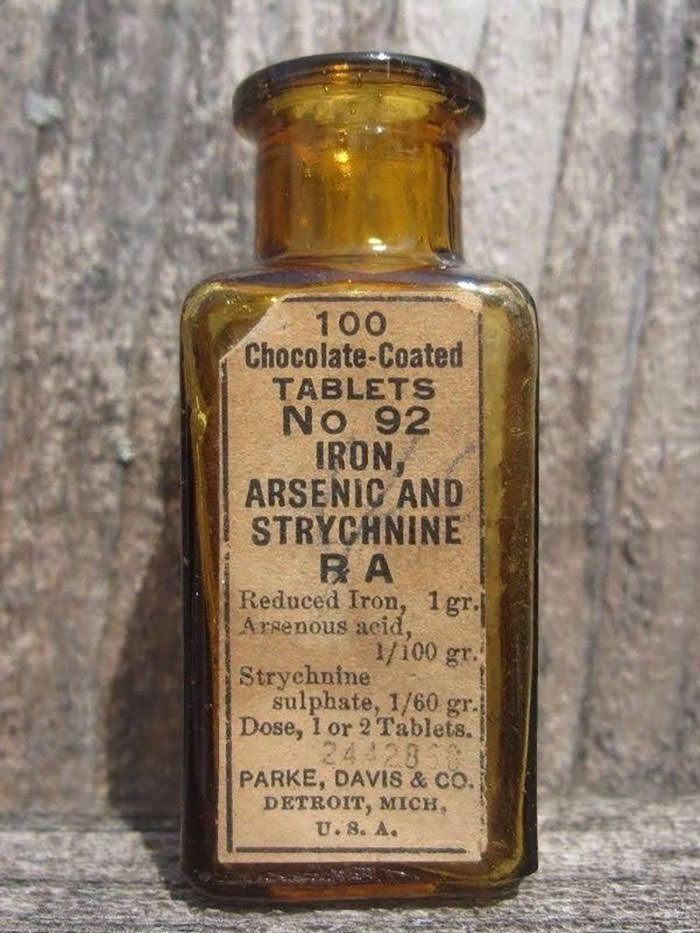
Arsenic, a highly toxic substance, has been used in medical treatments since ancient times. Despite being aware of its toxic properties, medical practitioners continued to use arsenic compounds to treat various diseases well into the 20th century.
Arsenic was incorporated into numerous tinctures, balsams, and tablets, which were prescribed for a range of conditions. Some of the diseases treated with arsenic compounds included trypanosomiasis, also known as “sleeping sickness,” and syphilis. In the case of sleeping sickness, arsenic-based drugs like melarsoprol were used until safer alternatives became available.
The use of arsenic in medicine highlights the precarious balance between risk and benefit that was often at play in historical medical treatments. While some patients may have experienced temporary relief from their symptoms, the long-term toxic effects of arsenic exposure often outweighed any potential benefits.



What was this supposed to cure, living?
Homeopathy uses small amounts of a thing that causes symptoms to cure symptoms. Here, death is probably the symptom. Nevertheless, it likely contains less arsenic (or at least much less added arsenic) than anything else around you, so it should be fine.
Arsenic is used as a medicine in some forms. It is commonly used as a component of extremely diluted homeopathic remedies for digestive disorders, food poisoning, anxiety, insomnia, allergies, depression, and obsessive-compulsive disorder.
Early modern cities were well-equipped to deal with rat infestations since arsenic was readily available through pharmacies as a highly effective rat poison. Arsenic was also widely available in powdered form from pharmacies, which is significantly less lethal to humans than liquid arsenic. The great poisoning scandals of early modern Europe – most notably the infamous Affair of the Poisons, which caused so much trouble in the reign of Louis XIV – tended to center around liquid arsenic poisons, commonly administered orally as drink or even medicine. Until the 19th century, doctors were unable to distinguish the main symptoms of arsenic poisoning. In addition to incompetence and inexperience, arsenic can produce fever and violent dysentery, which closely resemble cholera symptoms. The bottom of a victim’s shirt was also soaked in arsenic solution, a technique used in Paris. The symptoms of syphilis are closely resembled by painful sores around the groin. An enema is the most lethal and dangerous method of administering the poison to a victim. Arsenic administered rectally shrinks the bowels, causing agonising intestinal blockage and a death-by-constipation rarely recognized as murder.